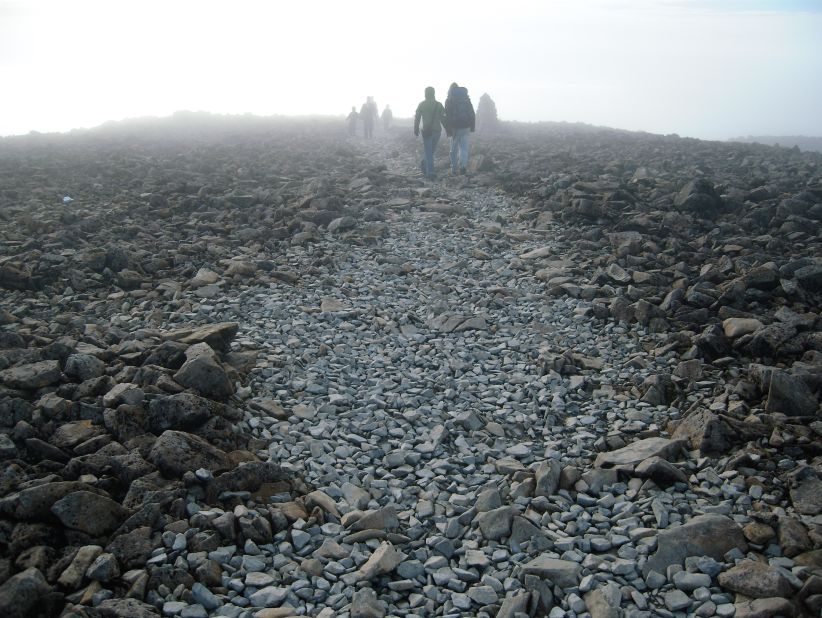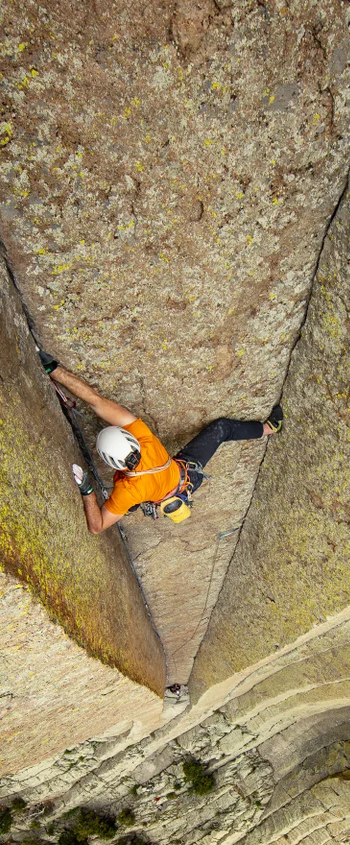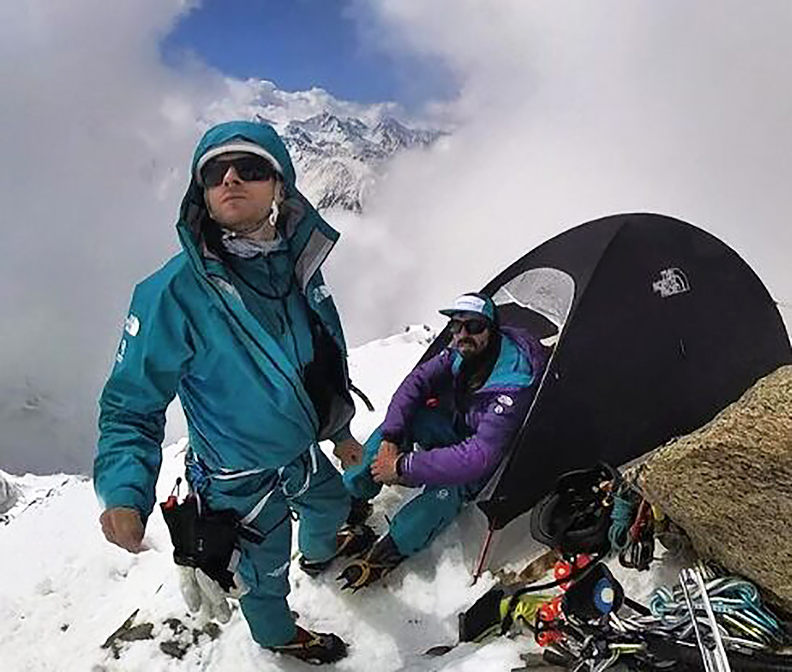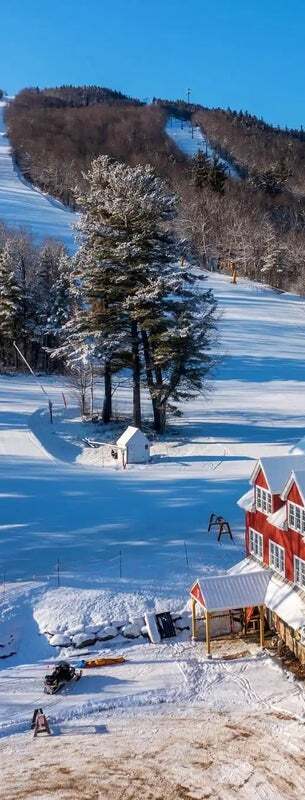Three-Year-Old Darlia Conquers Three Peaks Challenge, Raising Over £1,500 for Charity
Three-year-old Darlia from Peakirk, Peterborough, has achieved an incredible feat by completing the Three Peaks Challenge, making her one of the youngest individuals to accomplish this demanding hike. The challenge involves scaling the highest peaks in England, Scotland, and Wales, which Darlia managed to conquer over several weekends, completing the task in about 30 days.
Darlia, one of six sisters, embarked on this adventure with her supportive family. Her mother, older sister (aged 14), and younger sister (aged 18 months), who was carried by their father, James, joined her on the hikes. Together, they aimed to not only reach the summits but also raise funds for The Outward Bound Trust, a charity dedicated to inspiring young people to engage in outdoor adventures. Their efforts were immensely successful, raising more than £1,500 for the cause.
The journey began with Snowdon (Yr Wyddfa) at the end of April, followed by Scafell Pike on May 11, and culminating with Ben Nevis on May 26. James shared that Darlia’s enthusiasm was evident, as she “virtually ran up Snowdon and bounced her way back down,” motivated by the promise of an ice cream reward for her hard work. This determination and boundless energy were key to her success.
James expressed immense pride in his daughter’s achievement, highlighting the importance of outdoor activities for children. “I am so proud of her,” he said. “She is full of energy, and we were looking for ways to tire her out. As parents, we believe children should be getting outdoors as much as possible as it is great for both physical and mental health, and taking on a challenge like this will teach them a level of determination.”
The family, who frequently walk in the Peak District, did not undertake any specific training for the challenge, relying instead on their regular outdoor activities to prepare them. Their experience underscores a powerful message: embracing nature and outdoor challenges can be a transformative and inspiring experience for children.
By choosing to raise money for The Outward Bound Trust, Darlia and her family hope to encourage more young people to learn about the joys and benefits of outdoor adventures. The Trust’s mission to inspire young people aligns perfectly with the family’s values and the lessons they wish to impart to others through their remarkable journey.
Source:
https://www.bbc.com/news/articles/cndd59wenzlo
Learn more: https://www.adventurefilm.academy/
T. rex fossil found by boys during hiking in North Dakota
6/10 (UPI)3A3-year-old boy who went hikingin North Dakota noticed something sticking out ofthe ground and wasshocked to learn that he had discovered a fossil of a Tyrannosaurus Rex.
Jessin and Liam Fisher, 10 and 7, were hiking theNorth Dakota Bureau of Land Management land in Badlands, near Marmers, with their cousin Kayden Madsen, 9, and their fatherSam Fisher.
They askedTyler Lyson, ahigh school classmate of Sam Fisher and now acuratorof paleonto logyatthe Denver Museum of Natural Sciences, to help identify what they found during their 2022 hike.
Lyson and his paleontology team accompanied the family on a return journey to the discovery sitein the summer of 2023,determined that the boys had discovered the juvenile tyrannosaurus fossil. The fossil will be shownat the“Discovering Teen Rex” exhibition at the Denver Museum of Natural Science, which willopenon 6/21.
“By going outand embracing their passionand the thrill of discovery, these boys have made incredible dinosaur discoveriesthat advancescience and deepentheir understanding of the natural world,” Lyson said in a news release. “I’m excited to delveinto the “Teen Rex Discovery“experience, which I think museum guests will inspire imagination and wondernot only inour community, but around the world!”“Atthe opening of the exhibition,thepremiereof Documentary Twillalsoappear. Rexrecordedthe discovery of fossils, “T.It features “Anunprecedented journey into the world of Rexand hisfellow Cretaceous carnivores.”
Learn more: https://www.adventurefilm.academy/
Ready to Tackle New England’s Most Dangerous Hike?
The breathtaking view and sense of accomplishment are what make challenging hikes so exciting. While extreme sports and adventures may be popular on social media, they are not for everyone.
Hiking offers a variety of trails for all skill levels, with weather playing a significant role. Jenni Herchek from Baltimore, MD, shared a photo from the Precipice Trail on Oct 28 after a 12-hour drive.
The Weather Channel has compiled a list of the most dangerous hikes in the country, including the Precipice Trail in Acadia National Park, Maine. These hikes require top-tier skills and special gear, with many hikers training extensively for them.
Despite the incredible mountain ranges and national parks in the US, only seven hikes made the list. BJ McCollister from Portland, Maine, shared a photo from the Precipice Trail over Indigenous People’s Day Weekend.
The Precipice Trail is known for its steep cliffs and metal rungs that help hikers ascend over 1,000 feet in less than a mile to the summit of Champlain Mountain. While the climb is not technically difficult, it requires significant physical and mental strength.
After being closed for protection, the Precipice Trail and Orange & Black Path have reopened to the public.
Source: https://i95rock.com/most-dangerous-hike-maine-connecticut-new-england/
Learn more: https://www.adventurefilm.academy/
hiking
Hiking, walking in nature as a recreational activity. Especially among those with sedentary occupations, hiking is a natural exercise that promotes physical fitness, is economical and convenient, and requires no special equipment. Because hikers can walk as far as they want, there is no physical strain unless they walk among hills or mountains.
Many persons walk alone, mainly on weekends or holidays, but youth clubs and other groups arrange rambles, or hikes. The normal length of the walk undertaken is 7 to 12 miles (11 to 19 km) for a half day or 12 to 20 miles (19 to 32 km) for a full day. Those organized rambles, combining exercise with enjoyment of the countryside, are in country districts surrounding large towns and follow a planned route. Most densely populated European towns have hiking trails outside them.
For regular and intensive walkers there are available services offered by such associations as the Ramblers’ Association in Great Britain and the Wilderness Society in the United States. Those organizations encourage hiking and preserve footpaths, bridle paths, and rights of way in parkland and recognized open spaces in areas of natural beauty against the encroachment of builders, local authorities, and national undertakings. They also help hikers to obtain hostel accommodation and, by exchange of information and services, enable persons of one country to pursue these activities in others. The Appalachian Trail Conference (U.S.), with the aid of its member organizations in 14 states, maintains campsites and a trail more than 2,000 miles (3,200 km) long between Mount Katahdin in Maine and Mount Oglethorpe in Georgia; it publishes information on conditions of the camps and trail.
Hiking is basic to many sporting activities and is also a widely recommended and practiced form of physical training. For example, hiking constitutes a large part of mountain climbing; experienced mountaineers know that they must train themselves for the long, arduous hikes over the lower trails and across glaciers and snowfields. Backpack camping, hunting, cross-country skiing and snowshoeing, and orienteering are other sports and sporting activities in which hiking is important. The ability to walk considerable distances without becoming overtired (an ability generally acquired through practice) also enhances the enjoyment of such other activities as bird-watching, nature walks, field trips of all sorts, and even sightseeing.
Hiking is used as a test of fitness, notably in England, where it is embraced in the duke of Edinburgh’s scheme for boys and girls, and in Sweden and the Netherlands. In Sweden it was made a national fitness test in the early 1930s, and by the 1970s more than three million Swedish men, women, and boys possessed the time qualification badge. The Nijmegen marches in the Netherlands, organized by the Dutch League of Physical Culture, are open to the world in both civilian and military categories. The test comprises four separate days’ consecutive walking over distances up to 35 miles (56 km) each day, with about 12,000 persons taking part.
Source: https://www.britannica.com/sports/hiking
Learn more: https://www.adventurefilm.academy/
Exploring the World’s Longest Walk: From South Africa to China
Intrigued by Russ Cook’s remarkable run across Africa, Post Magazine delves into the possibility of creating the world’s longest walk on Google Maps, highlighting notable sites along the way and considering countries to avoid.
Russ Cook’s extraordinary journey, spanning 16,300km from Cape Agulhas to Tunisia, captured global attention as he became the first person documented to have traversed the entire length of Africa on foot. His 352-day odyssey through 16 countries showcased both endurance and determination, inspiring others with his feat.
Motivated by Cook’s accomplishment, the quest to map out an even longer route began. The hypothetical itinerary, meticulously crafted to navigate visa regulations, sealed borders, and conflict zones, spans an estimated 5,532 hours of walking time.
One of the lesser-known stops along the proposed route is Plaatjieskraal Ghost Town in South Africa, a hidden gem that came to light through Cook’s journey. His adventure serves as a reminder of the hidden wonders waiting to be discovered amidst the vast landscapes traversed during such epic expeditions.
Learn more: https://www.adventurefilm.academy/
Rock art, baboons and hiking in South Africa’s Drakensberg mountains
It’s 6am in the morning. I’m crammed into the back of a Toyota, rattling up a truly terrible unsealed road in blanket mist, about to begin one of the greatest walks of my life. The next few hours will also serve up mud, two chain ladders and, at times, a view that extends no further than the end of my arm. But in the Drakensberg mountains, special things lie in wait.
I’ve come on a hiking trip to the largest mountain range in South Africa, which can be found around four hours south of Johannesburg. It’s a grassy massif full of grand, muscular contours, almost 940sq miles of which are designated as a UNESCO World Heritage Site. Ancient rock art decorates its caves, baboons caper in its valleys and footpaths thread over its buttresses.
On the afternoon I arrive here from the city, it feels something like deliverance. The foothills are a soft green, their slopes sketched with bracken. A herd of hartebeest appears at the roadside. Sunlight washes down onto villages of thatched rondavels (traditional round huts) and roaming hens. I drive past a ‘chameleon crossing’ sign, then weaver bird nests dangling from an acacia tree. The peaks on the horizon are tall and table-topped.

When I reach the Cavern Resort & Spa, a hill sanctuary where red-winged starlings swoop past tree ferns and the world’s best-exercised spaniels snooze in reception, Mike Mlangeni talks me through the following day’s trail. Mike is a hiking guide, a proud Zulu, a Liverpool fan and an early riser. “We leave at 4am,” he tells me. “When we get there, we’ll have to take a four-wheel drive transfer to the start. Bad road,” he says, fixing eye contact. “But worth it.”
This is how we come to be juddering up a track before breakfast, watching the dawn fog become thicker. We’re about to begin the Amphitheatre hike, a 7.5-mile circuit that culminates on an outlandishly beautiful escarpment. Or so I’m told. The first hour, in near-zero visibility, is slow going, and it’s not until a semi-view opens up, with rags of cloud settled in the clefts of a mighty mountainscape, that I feel my blood pumping. Then we reach the chain ladders.
“They’re simple,” says Mike, as we stand under a set of iron rungs disappearing up the rock face. “Just don’t look down.” Minutes later, we’ve negotiated both nerve-wracking ladders — around 78ft and 50ft respectively, although there’s a longer alternative route for those disinclined to climb them — and reached a grassy plateau. A malachite sunbird whizzes past, a blast of colour in the lingering mist. It’s at this point, after some 90 minutes of walking, that the sun breaks through and the scenery hurtles dizzily into focus.
We’ve reached an altitude of over 2,438m. A river is chuckling away from us across the plateau and, as we keep walking, I see that it’s flowing directly off the cliffside. My pulse quickens. A sign bolted to a rock reads ‘Tugela Falls — The Tallest Waterfall In The World — 983 metres (3,225ft)’. Seconds later, the view from the drop-off opens up and hits me physically: a dreamlike universe of plunging water, basalt precipices and miles-away mountains.

I walk south, dazed, rambling along the cliff edge and staring out, then turn and do the same heading north. There are butterflies at my feet and gorges in the distance. Somewhere far below, cloud-shadows are patching the valley floor. I can’t take it all in. “See,” says Mike smiling when I rejoin him. “Worth it.”
Two days later, I’m sitting under a sandstone overhang examining 1,000-year-old paintings of hunters and lions. I’ve driven further south in the range to reach the thunderously handsome area around Cathedral Peak Hotel, a resort here since 1939. I had thought, foolishly, that the Amphitheatre’s scenery wouldn’t be topped, but here the peaks are more clustered, more hewn, somehow even more thrilling in scale. Groves of flowering protea trees dot the hills and black cuckoos echo from slope to slope.
The human figures in the rock paintings, which are thought to have been created using antelope blood, are shown running with spears. “They were done by the San people,” says my guide Zweli Sithole, his sun hat floppy above his scarified cheeks. “They were here before us Zulus, but they’re long gone now.” Zweli is the perfect hiking companion, with a warm patience and a habit of singing his words. “One step at a time,” he chants softly as we make the steep ascent up to a natural arch known as Mushroom Rock. “One step at a time.”
He leads me on a 10.5-mile loop through the empty green hills. Before I set out, the route description had sounded routine, but the reality is anything but. Craggy pinnacles frame the sky while slopes and ridges ripple into the distance. On a far hillside, elands graze in the sunshine. The views seem colossal and in all directions at once: spin on your heel and every way’s a winner. Zweli points out a high mountain pass that leads into Lesotho, then crouches by a stream to show me a crunched pile of crab shell left by an otter. We finish with a swim in the natural pool beneath Doreen Falls.
We stop so often to just sit and stare that it takes us nearly seven hours to get ourselves back to the resort. My boots are dusty and my calves are sore, but I’m absolutely buzzing for the rest of the day. Drakensberg translates as ‘dragon mountains’, while the Zulu word for the range — uKhahlamba — means ‘barrier of spears’. Never, I’m left thinking, were such dramatic names more warranted.
From summit to sea: a snowboarding adventure in the Arctic Circle
There are no lifts in Norway’s picturesque Lyngen Alps, so if you want to ride down a mountain to the shore you have to hike up it first
I’m on top of the world, in all senses of the term: we’re 500 miles inside the Arctic Circle in Norway’s Lyngen Alps and I’m buzzing at having reached the summit of Riššavárri, after a 31/2-hour hike.
Jagged white peaks rise starkly from snaking, deep blue fjords, the sun is shining, the light’s amazing – and there’s no one here but me and my guide, Mikal Nerberg. With more than 60 summits over 1,000 metres, the Lyngen Alps have a quasi-mythical status among hardcore skiers. It’s a purely touring destination: there are no ski lifts, so any mountain you want to ride down you have to hike up, using “skins” on your skis for grip. With ski fans increasingly wanting a fitness break, rather than just boozy lunches and downhill meanders, touring is a growth area.
The Lyngen Alps is where alpine guides come on holiday once their European season finishes, and where they bring their best and favourite guests. I’m here in early April but the season runs until June, when there’s skiing in the midnight sun.
Instead of getting a resort bus or cable car to our starting point, we take a ferry across the fjord from Lyngseidet to Olderdalen. Our hike begins at sea level, rising up through a forest of elder and silver birch, the trees bowed under the weight of the snow. Mikal is on touring skis, while I’m on a splitboard – a snowboard that splits in two so it can be used like touring skis. The way isn’t too steep, but Mikal insists on a slow pace and makes us stop for snacks every hour to keep energy levels up.

Coming out of the woods we see our target summit, high in the sky, and still another 1,000 metres away. The climb quickly gets steeper but at the hour-two stop I still feel OK. As we reach hour three, however, I begin to wonder if I’ll ever make it to the top.
I put my board together, while Mikal checks the snow to see which line would be our best descent. We set off, navigate some juddering wind-ruined snow then find a pocket of lovely soft pillow-like powder. Further down we ride super-fast spring slush, passing giant boulders of icy snow, and then cut into the forest we climbed through earlier, dodging the tightly packed tree trunks and stumps as if in a computer game. We emerge into a snowfield and ride down to the fjord, a complete run from summit to sea.
Most skiers and snowboarders stay at the Magic Mountain Lodge (bunks from £40pp full-board) in Lyngseidet – the main, albeit tiny town – but it’s fully booked, so I stay in a private rental house in a hamlet 12 miles north (Take Me Away, Holiday House, from £110 a night, sleeps four). Like almost every house in Lyngen it looks straight out of the Cabin Porn book: white wood with a pretty green trim and a 1960s-style kitsch interior. On my first night a white hare dances in the drive.
On day two we drive north to the waterside hamlet of Koppangen, where the road stops abruptly and turns into mountain. From here we set off for the 950-metre summit of Goalborri. Yesterday’s blue skies have switched to snowy showers. Before long it’s too steep and slippery to proceed by splitboard so I strap it to my backpack, put crampons over my boots, and Mikal hands me an ice axe for stability.

This feels more aerobically tough than the day before – like climbing a snowy ladder, with the odd rock to scramble over – but we cover a lot more ground. After 21/2 hours we reach the top. Tiredness only hits as we start to ride the steep but reassuringly wide couloir. Lower down, we put down fresh tracks in soft spring snow, before popping out at the fjord.
Later that night I see the wisps of the northern lights rise in the sky. It’s beautiful but doesn’t come close to being the highlight of my trip, nor does the snowboarding down, fun as that was. The bit I love best has been the hiking up, the hard work of earning those runs down in this wild, silent and most un-ski resort-like place. Which also happens to be as easily reachable from the UK as the European Alps.
Seeking the thrill: Extreme hikers go the distance
They had been in Nepal for a week trying to reach Thorong La Pass, 17,769 feet above sea level, when they were caught in a snowstorm, unable to make it to the nearest village.
Avalanches roared down the mountain.







Jeremy Aerts and his girlfriend May Wong pressed on: Extreme hiking enthusiasts, they had committed to making it all the way through.
For some people, the idea of facing such obstacles – especially voluntarily – seems crazy. And yet many in the extreme hiking community wouldn’t have it any other way.
The new film “Wild,” based on the memoir by Cheryl Strayed, chronicles a grueling solo hike along 1,100 miles of the Pacific Crest Trail, on the border with Mexico, after Strayed’s divorce and the death of her mother.
The movie, which hits theaters Friday, might encourage more travelers to try extreme hiking.
Aerts, 30, a GIS analyst from Pittsburgh, describes that night in Nepal this past spring as the closest he has ever been to death.
Despite being unable to see 10 feet ahead of them, Aerts and Wong continued.
“At one point the wind was so strong it knocked me off my feet,” said Aerts. “We had to break into an abandoned cabin just before dark to spend the night with our guide and another trekking group.”
The payoff came the next day when the couple reached the tiny village of Muktinath, surrounded by Himalayan peaks.
“It was one of the most beautiful places I’ve ever had the chance to see,” he said.
And that, in a nutshell, is why Aerts hikes.
“I love the sense of adventure and challenge that it presents,” he said. “I like the idea of never really knowing what to expect around the next corner.”
Mohit Samant, a 27-year-old software engineer from Kansas City, Kansas, got a similar feeling about hiking when he visited Guatemala a year ago in his most memorable of many hikes.
He had half a mind to quit midway through his hike through the Pacaya volcano due to the incredibly steep terrain, but the hikers with him motivated him to continue to the top.
Ultimately, he said it was the best hiking excursion he has done.
He was able to admire views of three other nearby volcanoes: Agua, Fuego and Acatenango, making the whole experience – three hours on foot – well worth it.
Besides the surge of adrenaline, these adventures pay off with some amazing photo ops. Check out the gallery to see more photos you can only take on extreme hikes.
A Breathtaking Mountain Trekking Adventure – A little Joy of life.
It’s not an adventure of a lifetime, because I have embarked on a journey to traversing a million paths and embracing a billion adventures. For I have begun walking on my soul-searching path.
I have heard people say that mountain trekking is a thrilling and awe-inspiring activity that allows adventurers to immerse themselves in the beauty and grandeur of nature. But from the moment I set foot on the rugged trails, I knew I was about to embark on a life-changing journey, and no words could surmise that moment.
This is not just a story of my unforgettable mountain trekking experience, but of my spiritual inner journey where I pushed my limits, embraced my inner strength, and forged a deep connection with the majestic peaks. As I stood at the base of the mountain, gazing up at its towering summit and soaking in the grandeur, a mix of excitement and nervousness coursed through my veins. But even in that moment of fear of the unknown path, I did not trace my steps back to the camp, something in my heart whispered, ‘Let’s traverse this path, for the mountains will lead me to the solitude my soul seeks’.

With every step I put forth, the mountains I carried on my shoulders started withering away. Every cell in my body pulled up every ounce of resilience and determination to cross treacherous rocky paths and brave winds that froze my skin. But it was precisely in those tough moments that my inner strength held me through and whispered, “Keep going forward”.
And if there was ever a fleeting moment of my resilience wavering, I found my courage amongst the group of absolute strangers who became a wolf pack during the trek, washing away my self-doubts with words of encouragement. With every step forward, don’t know how just those pack of strangers supported me throughout and contributed to making it possible to complete the trek, have gradually become friends’ alike family.

For every mountaineer, mountain trekking is not just a physical feat; it is a spiritual and introspective journey that is unique to each one of them. No doubt, trekking through mountains offered a captivating experience that intertwines your spiritual connection with the divine. This journey became heavenly with rugged landscapes, majestic peaks, and serene valleys enchanting the soul. The whispering breeze, the flowing streams, and the rustling leaves speak a language of volumes of solitude, revealing the divinity inherent in every natural spectacle.

It was that moment of solitude that silenced the noise of everyday life and I plunged deep into self-reflection, touched my nodes of self-love, and whispered a little note of gratitude to the mountains. Nature has always taught me invaluable lessons about patience, perseverance, and gratitude. But today it has brought me much closer to the Almighty in the true spiritual sense.
Mountaineering is not about the destination, it is the journey along the path, the moments that we feel with every step. It reminds me to cherish the present moment, as the journey itself is as important as reaching the destination. In the solitude of the mountains, I dwelled in inner peace being one with nature. Atop the summit, there I felt a sense of achievement and was humbled by the vastness that stretched before me. It was in this moment and the mountains that lead me closer to the realm of the gods. And with every breath I took, I felt my inner being’s connection with nature and the divine presence became overwhelming.

I knew I cannot stay at the peak of the mountains forever, and I would have to trace my path back to the base. I spread my arms out and sent a big hug to the vastness and a few moments later, I closed my arms and embraced the experience that overwhelmed me with emotions that I cannot put down in words.
Returning from the mountains, the experience stays with you forever and ever, transforming your perception of the world. Trek becomes a sacred pilgrimage, a communion with nature and a higher power where I, personally always feel a deep connection with the Almighty that comes along the way – a connection that reminds you of the magnificence of creation and the vastness of the spiritual journey that lies ahead.!

My mountain trekking experience was an adventure of a lifetime, etching memories in my heart forever. It taught me to embrace challenges, appreciate the beauty of nature, and discover my inner strength. Through the ups and downs of the journey, I forged lifelong friendships and gained a renewed sense of purpose. Mountain trekking has the power to transform individuals, leaving them humbled by nature’s might and inspired to conquer new horizons. If you seek an experience that challenges your limits and nourishes your soul, I encourage you to embark on your own mountain trekking adventure. It has brought a sense of perspective, reminding me to be humble, appreciate the small joys, and embrace a mindset of gratitude. This experience instilled in me a sense of responsibility to protect and preserve the natural wonders that we are fortunate to witness.
I’m eager to hear mesmerizing tales of your mountain trekking adventures; please do share with me the breathtaking moments, the challenges overcome, and the triumphs atop those majestic peaks…!
By
For more information and details : https://www.linkedin.com/pulse/breathtaking-mountain-trekking-adventure-little-joy-nair-kapoor




